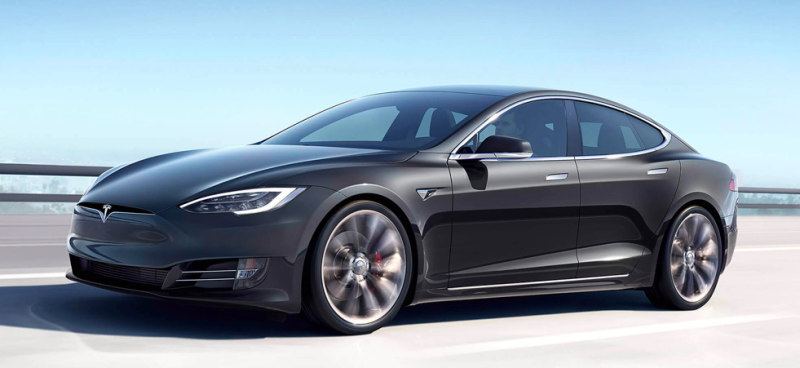
A Tesla Model S caught fire in a Hong Kong parking lot on Sunday, less than a month after video of a Model S bursting into flames in Shanghai, China went viral. Now, “out of an abundance of caution,” Tesla says, the company is making software changes that could reduce the risk of batteries catching fire.
The owner of a Tesla Model S 85D says he charged his vehicle up to 97 percent using a Tesla Supercharger in Hong Kong, according to Apple Daily, and then moved the sports sedan to a parking lot at a shopping mall called the San Po Kong Plaza. A half an hour later, he was notified that there was a fire in the lot. The news source writes that the camera footage shows smoke emanated from the front of the car before three “explosions” occurred.
The car was parked under a sprinkler, the owner told Apple Daily, which may have helped the fire department extinguish the car in 45 minutes. The car’s front was severely damaged, and the parking lot was left with a large burn mark, Apple Daily reported.
Jalopnik spoke with a Tesla spokesperson about the incident, and the company said it is making some over-the-air changes to thermal and charge management battery software to make the Model S and X safer, writing in an email (emphasis ours):
Although fire incidents involving Tesla vehicles are already extremely rare and our cars are 10 times less likely to experience a fire than a gas car, we believe the right number of incidents to aspire to is zero.
As we continue our investigation of the root cause, out of an abundance of caution, we are revising charge and thermal management settings on Model S and Model X vehicles via an over-the-air software update that will begin rolling out today, to help further protect the battery and improve battery longevity.”
Advertisement
It’s worth noting that, according to the spokesperson, it’s not certain that the attributes that Tesla is altering via these software updates contributed to the fires in Hong Kong or Shanghai.
So far in Tesla’s own investigation, the company says it noticed that only a few battery modules were affected by the fire, a finding that Tesla used to highlight its strategic flame propagation mitigation scheme, writing:
While our investigation with authorities is ongoing, we have found that only a few battery modules were affected and the majority of the battery pack is undamaged. Tesla battery packs are engineered with a state-of-the-art design so that in the very rare instance a fire does occur, it spreads very slowly and vents heat away from the cabin, alerting occupants that there is an issue and giving them enough time to exit the vehicle.
Advertisement
Tesla doesn’t yet have any conclusions to report on either the Shanghai or Hong Kong incidents. As for the software updates, which Tesla says were decided upon after this fire in Hong Kong, what we know is fairly vague: The changes are essentially just algorithm tweaks to the thermal management setup and battery charging strategy. Tesla claims the customer won’t notice much of a difference in the way their cars behave, though if the batteries were to get extremely hot they may notice a “nearly imperceptible” loss of range, though hopefully an extended overall battery life.
As for the company’s cheapest model, the Model 3, it’s battery setup, Tesla’s spokesperson told Jalopnik, is markedly different than the S’s or X’s, and thus it will not receive these updates.
Update: This article has been amended to clarify that the Tesla Model S or X may not necessarily have to be driving for extreme battery temperatures to occur. The new thermal management software aims to manage those temperatures under all conditions.













